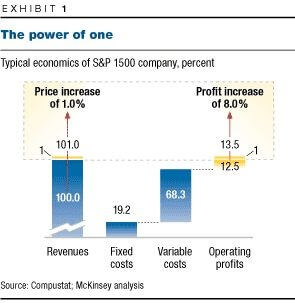Over the past few weeks, I’ve heard a similar comment in different meetings with clients and prospective clients. It’s been something to the effect of…
“We want customers to come looking for our products instead of us having to go to them!”
In essence, what they each want is to become a premium brand that is sought out because of its perceived superior quality or value. Why? Most likely because it’s easier to make a sale. But the notion that premium brands see a 20% return-on-sales versus as little as 5% for non-premium brands could just be reason enough. (Harvard Business Review, 1997)
At Huebner Marketing, we’ve had the privilege to work with a few premium brands over the years. And how did these brands go from non-premium to premium you might ask? Well, if I could sum that answer up into one article, I’d be sipping Arnold Palmers on some beach in Tahiti right now. However, here are just a few premium brand-building principles we’ve observed with our clients. Hopefully, these will get your brand started down the right path…
Principle 1: They believe quality can’t just be a perception. It’s “gotta be real.”
Premium brands understand that quality is a given, so they are typically leaders when it comes to quality-control programs. This ensures a consistent customer interaction with the brand, which in turn builds critically-important trust in the brand experience.
Principle 2: They understand that brand building doesn’t happen without a good story.
The foundation to brand building is good brand positioning, and good brand positioning occurs when there’s a strong and relevant difference in the product or service. We’ve found that clients who’ve been able to command a premium price have each had unique stories to tell that helped customers not only become aware of their offerings but become “strategically aware” of precisely what it was that made our clients’ products or services so different… and as a result, desirable.
Principle 3: They view brand building as an investment, not an expense.

Our premium brand clients have understood from the beginning that brand-building is an investment in profitability. McKinsey and AT Kearny both conducted similar studies finding that a 1% increase in revenue creates, on average, 3.1% more profit. But a 1% increase in price creates 8% more profit. What, in part, enables a company to command a higher price? An investment in building a premium brand.
The top automakers are a good example. The average spent on advertising alone (and not including other marketing expenses) is nearly 1% of revenue. They’ve understood for decades that brand-building is without a doubt an investment in profitability.
Principle 4: Premium brands take responsibility for maintaining the integration and integrity of their message all the way through to the local sales channel.
Through-channel marketing automation, co-op advertising programs, customized marketing tools, dealer trips, sales training seminars, localized internet advertising programs, and sales lead generation are just a few of the ways premium brands make sure their investment doesn’t get lost at the local level. Without that local “control,” a brand may be at the mercy of the competency (or lack thereof) of the local dealer or sales channel. Premium brands understand this and invest accordingly.
